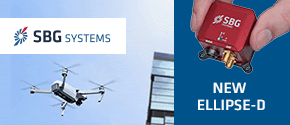| GNSS News | |
GNSS
Industry invited to bid for low-Earth orbit satnav demo
While GNSS will remain a fundamental backbone, for Positioning, Navigation and Timing (PNT) services to go on improving into the future, a new element will be required. ESA’s LEO-PNT satellites, approved at last year’s Ministerial conference, will test out this concept in practice, with a mini-constellation of at least ten satellites, placed in orbit a matter of hundreds of kilometres above the surface of Earth – as opposed to the 23 222-km-distant Galileo satellites.
ESA has now launched the Invitation to Tender (ITT) calling European companies to join this endeavour. The ITT covers all aspects of ESA’s LEO-PNT Orbit Demonstrator, including the space and ground segments, system engineering aspects, operations, launch, the test user segment, experimentation, and service demonstration in representative user environments.
Combining medium- with low-Earth orbit constellations on a multi-layer basis should represent a significant step forward. Medium Earth orbit was initially selected for GNSS constellations because a couple of dozen satellites at this altitude can deliver global coverage. In addition, with less of a distance to cover down to Earth, the signals from these additional LEO-PNT satellite signals can reach places where today’s satnav signals cannot reach. And by adopting novel navigation techniques and a wider range of signal bands the satellites can address various specific user needs, such as more rapid position fixes, increased precision, resilience and signal penetration. www.esa.int
Signal Authentication Service
The Cabinet Office, Japan is developing a signal authentication service that can confirm whether a signal received by a GNSS receiver is actually a signal transmitted from a positioning satellite or not. The service will be launched in the fiscal year 2024.
This service uses digital signature authentication technology to provide a mechanism for verifying the authenticity of positioning signals. Specifically, the QZSS control station generates digital signature data using the private key. The digital signature data is included it in the positioning signal information (navigation message), and it is distributed it via the QZSS. The user (GNSS receiver) verifies whether or not the navigation message has been tampered by performing arithmetic processing using the public key obtained in advance, the received digital signature data, and the navigation message (hash value).This makes it possible to confirm that the positioning signal is authentic.
This mechanism enables users to perform secure positioning using only positioning signals transmitted from real positioning satellites.












 (No Ratings Yet)
(No Ratings Yet)




Leave your response!